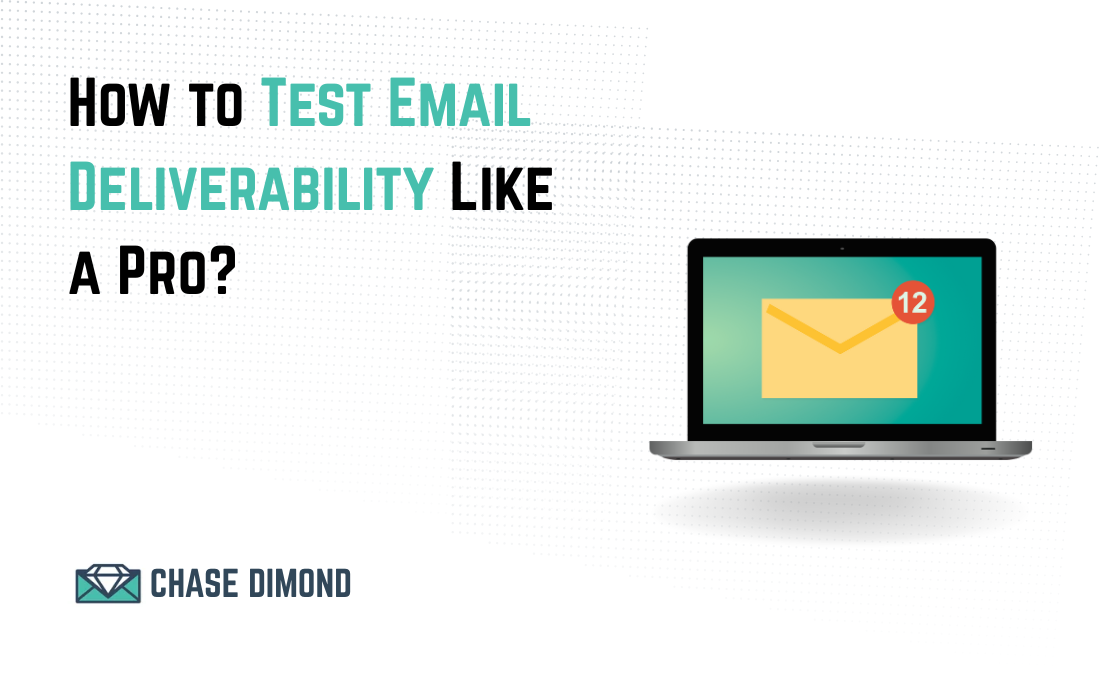How to Test Email Deliverability Like a Pro
Email deliverability is one of those things most marketers don’t pay attention to… until something breaks. You hit “send” on what you think is a great email, and then you wait. And wait. And nothing happens. No replies. No traffic. No bump in sales.
It feels like your email fell into a black hole.
The frustrating part?
Most people don’t even realize the issue is deliverability. They assume their content wasn’t interesting enough or that their audience just wasn’t active that day. In reality, their emails never stood a chance of being seen because something behind the scenes — something invisible — went wrong.
That’s why testing your email deliverability isn’t optional. It’s the only way to see what’s really happening once your email leaves your outbox.
The Quiet Problems That Ruin Deliverability
Deliverability issues aren’t loud. They don’t announce themselves.
There’s no flashing error message telling you, “Hey, your emails are landing in spam now.” They hide underneath good-looking numbers, which is what makes them dangerous.
I remember working with a brand that thought their email marketing was in great shape. Their open rates were solid, and they felt confident every time they sent a campaign. But when we dug into some deeper testing, we noticed a problem: a big percentage of their messages were landing in the promotions tab. Not technically spam… but not where you want to be either.
And because they weren’t monitoring inbox placement, they had no idea. Their performance wasn’t bad — but it could’ve been so much better.
This is the tricky thing about deliverability.
Everything can look fine on the surface while something major is going wrong underneath.
Why Looking Only at Opens and Clicks Doesn’t Work
Open rates feel comforting. They give you this sense that “People are engaging with my emails. Everything must be fine.”
But opens don’t tell you the whole story.
They don’t tell you:
If most of your audience saw your email in the main inbox or in a low-priority tab
How many people are quietly reporting your emails as spam.
Whether your list is becoming toxic.
And they definitely don’t tell you if mailbox providers see you as a trusted sender or someone they should filter more aggressively.
To see the real health of your email program, you have to look at things that open rates never reveal — things like inbox placement, spam complaints, bounce patterns, and your sender reputation. These tell you how email providers truly view your sending behavior.
A fun (or not-so-fun) example?
B2B emails have a delivery rate above 98%. That’s insanely high. It shows what’s possible when everything behind the scenes is properly set up. But the only way you’ll know where you stand is through regular testing.
Why a Clean Email List Is Everything
If your list is full of inactive people, old email addresses, or contacts who never open anything, your deliverability suffers. Email providers see low engagement as a sign your emails aren’t valuable — and they start filtering you more aggressively.
I always compare it to sending physical mail.
If you send letters to a bunch of empty houses, eventually the post office stops trusting you. It’s the same idea here.
Deliverability testing helps you spot these issues early so you can clean things up before your reputation takes a hit.
Building a Simple Deliverability Testing Setup
You don’t need a massive, complex system to test deliverability. Most people picture something technical or overwhelming, but the reality is far simpler. It’s more about consistency and awareness than fancy software.
Think of it like setting up a dashboard in your car. The dashboard doesn’t drive for you — it just tells you immediately when something’s wrong.
Tools You Actually Need
People love long tool lists, but in my experience, most businesses only need a handful of tools to monitor deliverability effectively.
Mail-Tester is great for quick checks. It gives you an overall score, explains what might trigger spam filters, and tells you if your authentication is correct. It’s super simple and surprisingly helpful.
If you want deeper data, tools like GlockApps are worth every dollar. They show exactly where your emails land across different providers — Gmail, Outlook, Yahoo, and others. It’s eye-opening when you realize Gmail sends your email to promotions while Outlook puts you in spam.
Sender Score can also help you understand your domain reputation, which is like a credit score for your email behavior. If it’s low, providers treat you cautiously.
These tools aren’t complicated. They just give you visibility you otherwise wouldn’t have.
The Truth About Bounce Rates
Bounce rates are like warning lights.
A sudden jump usually means something is wrong with your list — maybe you haven’t cleaned it in a while, or maybe you added emails from a questionable source.
Bounce rates don’t get enough attention, but they play a huge role in your reputation. Providers don’t like seeing too many invalid email attempts. If it happens often, they’ll quietly start moving your messages out of the inbox.
Seed Lists
Seed lists are super effective for testing where your emails actually land. But the key is to build them carefully. They shouldn’t just be random addresses you create for testing. They should look like your real audience.
If your actual subscribers are mostly Gmail users, your seed list should be full of Gmail accounts. If you’re sending to corporate domains, include those. Think of the seed list as your undercover team reporting back what happens on the other side.
A well-built seed list gives you the closest look at what’s really going on once your email is delivered.
How Often Should You Test?
Testing shouldn’t feel like a chore.
Some people test every day and burn themselves out. Others test once every six months and miss obvious problems.
The right rhythm depends on how often you send emails.
If you send something every day, you should check your deliverability fairly often. If you have a weekly newsletter, a consistent weekly or bi-weekly test is usually enough.
The goal is to catch issues early, not obsess over them constantly.
Deliverability Detective for Your Business
Once you start paying attention to deliverability, something interesting happens: you develop a kind of intuition for it. You begin noticing little patterns — like a slight drop in placement or a slow rise in complaints — long before they become major problems.
You start spotting “clues.”
I once worked with a brand that kept bragging about their amazing open rates. They were so proud of them. But their sales were basically frozen. No growth, no decline — just flat. That didn’t add up.
When we tested their inbox placement, we found the truth: almost all their emails were landing in the promotions tab. People were opening, but not at the right time, and not with the right intent. Their open rate looked amazing but meant very little for conversions.
That experience taught them something important: inbox placement is the real indicator of success.
Fix Deliverability Issues
When people realize they have a deliverability problem, their first reaction is panic. But the reality is that most problems are fixable with steady, simple improvements.
The first place to look is always your list. Removing old contacts, trimming unengaged subscribers, and focusing on people who actually want your content can make an immediate difference.
Then there’s authentication. SPF, DKIM, and DMARC might sound scary, but once they’re set up correctly, your deliverability can jump significantly. It’s like signing your emails with a verified stamp.
And then there’s your content.
Spam filters look at how you write. Too many images, too many exclamation marks, long spammy phrases — all of that makes filters suspicious. Keeping your emails clean, simple, and human can dramatically help your inbox placement.
I’ve watched brands recover from terrible deliverability in a matter of months simply by cleaning their lists, fixing authentication, and sending content people actually care about. It’s not magic — it’s just consistent good behavior.
Test Your Email Content
One of the simplest things you can do is test your content before you hit send. Mail-Tester, for example, gives you an instant snapshot of potential problems — missing authentication, spammy words, large images, broken links, and more.
It’s a bit like spell-checking your email before you send it. Just a small habit that prevents a lot of issues later.
A/B testing helps too. You can test different subject lines, different senders (“Sarah from Brand” vs “Brand Team”), or a simpler email layout. Sometimes changing just one element is enough to get better inbox placement.
Regular Deliverability Testing
The biggest challenge with deliverability isn’t the testing itself — it’s staying consistent. Most people do it once, feel good about the results, and forget about it until something goes wrong again.
But deliverability isn’t a one-time task.
It’s more like dental care — small, regular habits prevent major pain later.
You don’t need to overcomplicate it. You just need to commit to checking in regularly, paying attention to changes, and taking action when something looks off. The more you integrate it into your normal workflow, the easier it gets.
Turn Deliverability Insights Into Real Results
None of this matters if it doesn’t help your business grow.
That’s why the final step is connecting deliverability improvements to your actual results.
When you improve inbox placement, your open rates naturally increase.
Better opens lead to more clicks.
More clicks lead to more conversions.
And more conversions lead to more revenue.
Deliverability is one of the most direct ways to boost your email marketing performance — but because it operates quietly in the background, people forget about it.
Once you see the connection, though, it becomes one of your most valuable levers.




























